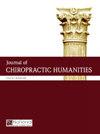In Defense of Metaphysics: A Kantian Approach to the Philosophy of Chiropractic
Q3 Health Professions
引用次数: 0
Abstract
Objective
At the extremes of interpretation within chiropractic’s philosophical landscape, one group of members adheres to historical doctrines of Innate Intelligence, whereas the other group borders on scientism. This article examines the metaphysical problems faced by each extreme and offers the methodology of Immanuel Kant as a means toward progress in understanding by offering a unifying application of philosophy.
Discussion
The philosophical and ideological extremes within chiropractic represent divergent epistemologies, with one group arguing for the necessity of deductive rationalism based on axiomatic principles and the other for the primacy of empirical or scientific knowledge. This division emerges from a basic misunderstanding of the aim of metaphysics and recapitulates fierce disagreements published throughout the Enlightenment in continental philosophy, culminating with Kant’s Critique of Pure Reason. Kant’s was an attempt to reconcile these disparate views by elevating metaphysics to the level of science. This article works backward chronologically from Daniel David Palmer to Kant and then from Kant to contemporary applications of metaphysics. By investigating Kant’s arguments and those that followed, it is observed that positivism, grounded in empirical science, as well as rationalism in and beyond chiropractic research, depends upon certain metaphysical ideas that cannot be dismissed.
Conclusion
This article proposes that empirical scientific research in the clinical setting is contingent upon basic assumptions that are inherently metaphysical. In order to further philosophical progress in chiropractic, metaphysics in chiropractic, as in Kant’s time, must embrace an academically rigorous form.
为形而上学辩护:康德式的脊椎疗法哲学
在脊椎指压疗法哲学领域的极端解释中,一组成员坚持先天智力的历史学说,而另一组则接近科学主义。本文考察了每个极端所面临的形而上学问题,并提供了伊曼努尔·康德的方法论,通过提供哲学的统一应用,作为一种通往理解进步的手段。脊骨疗法中的哲学和意识形态极端代表了不同的认识论,其中一组主张基于公理原则的演绎理性主义的必要性,另一组则主张经验或科学知识的首要地位。这种分歧源于对形而上学目的的基本误解,并概括了启蒙运动期间大陆哲学中发表的激烈分歧,最终以康德的《纯粹理性批判》告终。康德试图通过将形而上学提升到科学的水平来调和这些不同的观点。本文按时间顺序从丹尼尔·大卫·帕尔默回溯到康德,然后从康德回溯到形而上学的当代应用。通过调查康德的论点和随后的论点,可以观察到实证主义,以经验科学为基础,以及在脊椎疗法研究内外的理性主义,依赖于某些不可忽视的形而上学思想。本文提出,临床环境中的实证科学研究取决于本质上形而上的基本假设。为了进一步推动脊骨疗法的哲学进步,脊骨疗法的形而上学,就像康德时代一样,必须拥抱一种严谨的学术形式。
本文章由计算机程序翻译,如有差异,请以英文原文为准。
求助全文
约1分钟内获得全文
求助全文
来源期刊

Journal of Chiropractic Humanities
Medicine-Complementary and Alternative Medicine
CiteScore
1.70
自引率
0.00%
发文量
7
 求助内容:
求助内容: 应助结果提醒方式:
应助结果提醒方式:


